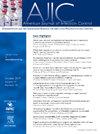COVID-19 老年人疫苗接种率不平等:多维人口分析。
IF 3.8
3区 医学
Q2 INFECTIOUS DISEASES
引用次数: 0
摘要
背景:年龄、种族、民族和性别是 COVID-19 结果的重要决定因素。老年人(65 岁及以上)是 COVID-19 发病率和死亡率的高危人群。通过对人口统计学进行细分来分析他们的疫苗接种情况是非常罕见的,而且有助于制定疫苗接种政策。本研究按种族、民族和性别调查了他们对 COVID-19 第一剂和第二剂疫苗的接种情况:方法:使用免疫登记数据计算肯塔基州人口最多的县杰斐逊县在 COVID-19 疫苗接种计划的前六个季度中按种族、民族、种族-性别和民族-性别划分的老年人 COVID-19 疫苗接种率的时间变化:截至 2022 年 5 月,该县亚裔居民的第一剂和第二剂疫苗接种率最高(分别为 97.0% 和 80.4%),其次是白人居民(分别为 90.0% 和 80.2%)。黑人居民的 COVID-19 疫苗接种率最低(87.3% 和 77.3%)。西班牙裔居民的接种率(82.0% 和 66.4%)大大低于非西班牙裔居民(90.2% 和 80.1%)。男性的比例一直较低:结论:在研究期间,基于种族、民族和性别的 COVID-19 疫苗不平等现象在很大程度上得以维持。疫苗推广实践和宣传计划应旨在提高少数民族和男性老年人对 COVID-19 疫苗的接种率。本文章由计算机程序翻译,如有差异,请以英文原文为准。
COVID-19 vaccine uptake inequality among older adults: A multidimensional demographic analysis
Background
Age, race, ethnicity, and sex are important determinants of coronavirus disease of 2019 (COVID-19) outcomes. Older adults (65 years and older) are at the highest risk of COVID-19 morbidity and mortality. Analyzing their vaccine uptake by subclassifying demographics is rare and can assist vaccination policies. This study investigates COVID-19 dose 1 and 2 vaccine uptakes among them by race, ethnicity, and sex.
Methods
Immunization registry data were used to calculate temporal changes in older adults’ COVID-19 vaccine uptake by race, ethnicity, race-sex, and ethnicity-sex in Kentucky’s most populous county, Jefferson County, during the first 6 quarters of the COVID-19 vaccination program.
Results
By May 2022, the county’s Asian residents had the highest dose 1 and 2 vaccination rates (97.0% and 80.4%), then White residents (90.0% and 80.2%). Black residents had one of the lowest COVID-19 vaccination rates (87.3% and 77.3%). The rate among Hispanic residents (82.0% and 66.4%) was considerably lower than non-Hispanic residents (90.2% and 80.1%). The rates were consistently lower in males.
Conclusions
Racial, ethnic, and sex-based COVID-19 vaccine inequalities were largely maintained during the study period. Vaccine rollout practices and promotional programs should aim to boost the uptake of the COVID-19 vaccination among racial minority and male older adults.
求助全文
通过发布文献求助,成功后即可免费获取论文全文。
去求助
来源期刊
CiteScore
7.40
自引率
4.10%
发文量
479
审稿时长
24 days
期刊介绍:
AJIC covers key topics and issues in infection control and epidemiology. Infection control professionals, including physicians, nurses, and epidemiologists, rely on AJIC for peer-reviewed articles covering clinical topics as well as original research. As the official publication of the Association for Professionals in Infection Control and Epidemiology (APIC)

 求助内容:
求助内容: 应助结果提醒方式:
应助结果提醒方式:


